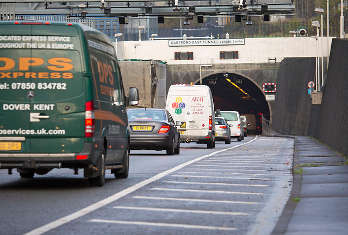Road use statistics show a 'countrywide overdependence on cars' that risks marginalising people who don’t drive, campaigners have said.
The Department for Transport (DfT) has published the Road Use Statistics: 2016 report, which draws together key results from departmental statistics ‘to provide an overall picture of roads, vehicles and how people use roads’.
According to the DfT, the vast majority (89%) of journeys are made by road and the majority of these are by car or van, while almost three times more goods are moved by roads than by water and rail combined.
The report says this shows that ‘Roads are vital for moving people and goods around the UK’.

Van traffic has increased by 38% since 2000
But Stephen Joseph OBE, chief executive of Campaign for Better Transport, told Transport Network: ‘These figures reveal a countrywide overdependence on cars which now means in many areas if you don't drive, you can't get around. The Government is spending billions on new roads while cutting support for vital local public transport like buses.
‘This risks marginalising young people, over 65s, those with disabilities and low income households, who we know are most reliant on public transport. We badly need more balanced transport policies which support all sections of society and offer choice in how we get around.’
He added: ‘These statistics reveal that nearly three quarters of all freight is still moved by road. Getting more freight onto rail would help reduce transport emissions and congestion, as well as reducing the huge cost to the taxpayer of repairing the damage caused by lorries to our road network.’
The report includes road traffic statistics, the National Travel Survey, vehicle licensing statistics, and road freight statistics.
It shows that although car use per person has fallen across all different trip purposes since 2002, two thirds of commuting trips are still made by car.
While the majority of trips under a mile are made by walking, car is the main mode of travelling for longer trips.
Recent trends show a resumption of overall traffic growth after the recession, although HGV traffic has not yet returned to pre-recession levels.
Van traffic has increased significantly (38%) since 2000. The report says likely causes include the changes to taxation rules, which may have made them a more attractive option for some people, and the increase in internet shopping and home deliveries.
England’s Strategic Road Network shows the largest traffic growth in recent years. Although it accounts for only 2.4% of the road network length it carries 33% of traffic.
Register now for full access
Register just once to get unrestricted, real-time coverage of the issues and challenges facing UK transport and highways engineers.
Full website content includes the latest news, exclusive commentary from leading industry figures and detailed topical analysis of the highways, transportation, environment and place-shaping sectors.
Use the link below to register your details for full, free access.
Already a registered? Login